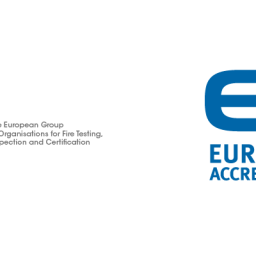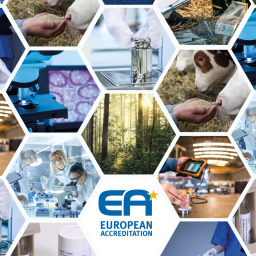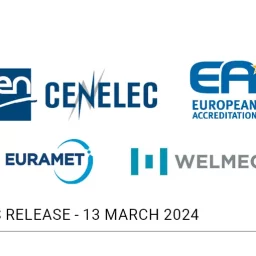Introduction
Pursuant to Article 2 (10) of Regulation (EC) No 765/2008, accreditation is defined as an attestation by a national accreditation body that a conformity assessment body meets the requirements set by harmonised standards and, where applicable, any additional requirements including those set out in relevant sectoral schemes, to carry out a specific conformity assessment activity.
The specific conformity assessment activity is the scope of accreditation, for which accreditation is sought or has been granted (see EN ISO/IEC 17011, paragraph 3.6).
Only conformity assessment activities, which are expressed in the scope of accreditation, will be or have been assessed by the national accreditation body in the accreditation process.
Accordingly, the accreditation certificate/information shall include – among others – the following:
- the harmonised ‘accreditation’ standard,
- the relevant EU legislation, and
- the scope for accreditation.
Pursuant to Article 5 (3), a national accreditation body shall monitor the conformity assessment body to which they have issued an accreditation certificate.
The conformity assessment body can use the accreditation symbol or other claims of accreditation for activities which are covered by the scope of accreditation and included in the accreditation certificate/information.
Problem definition
There are EU legislations, which include that an accredited conformity assessment body for a certain EU legislation shall be an accredited conformity assessment body for the purpose of another EU legislation.
Example Article 18 (1) of Regulation (EU) 2023/956 establishing a carbon border adjustment mechanism:
Any person accredited in accordance with Implementing Regulation (EU) 2018/2067 for a relevant group of activities shall be an accredited verifier for the purpose of this Regulation. The Commission is empowered to adopt implementing acts to identify relevant groups of activities by providing an alignment of the qualifications of an accredited verifier that are necessary to perform verifications for the purpose of this Regulation with the relevant group of activities listed in Annex I to Implementing Regulation (EU) 2018/2067 and indicated in the accreditation certificate. Those implementing acts shall be adopted in accordance with the examination procedure referred to in Article 29(2) of this Regulation.
These provisions in Regulation (EU) 2023/956 create different issues:
- The conformity assessment body (verification body) has not been assessed for the purpose of CBAM in order to demonstrate that the (additional) requirements set out in the Regulation are fulfilled.
- The conformity assessment activities (verification activities) are not covered in the scope of accreditation and accordingly not included in the accreditation certificate, unless the verification body has applied for accreditation for this specific activity.
- The verification body cannot claim to be accredited for this activity, because it is not part of the scope of accreditation and included in the accreditation certificate.
- Because this activity is not part of the scope of accreditation, the verification body will not be monitored by the national accreditation body (for this activity).
- Granting accreditation, including the scope of accreditation, is exclusively under the responsibility of the National Accreditation Body.
Furthermore, apart from the principles listed above, the conformity assessment activities, particularly the verification methodology, under Regulation (EU) 2018/2067 are different and not compatible with Regulation (EU) 2023/956.
Consequences
The European regulator is requested to avoid in legislations any provision which can be deemed as an ‘automatic’ or ‘transferred’ accreditation. Any accreditation of conformity assessment bodies, including the scope for accreditation, is under the responsibility of the national accreditation body only.
A conformity assessment body shall apply for accreditation, or scope extension, to its national accreditation body in order to become accredited for the purpose of a certain legislation. This applies also to legislations, which include a provision that the accreditation under a certain legislation can be used for the legislation concerned.
The conformity assessment body can use the accreditation symbol or other claims of accreditation only, if the relevant specific activity (including the reference to the legislation concerned), is included in the accreditation certificate/information.
Click here to download the publication.
On World Standards Day 2025, CEN, CENELEC, EA, EURAMET, EUROLAB, PROSAFE and WELMEC come together to celebrate the vital role of partnerships in achieving the United Nations Sustainable Development Goals…
On World Standards Day 2025, CEN, CENELEC, EA, EURAMET, EUROLAB, PROSAFE and WELMEC come together to celebrate the vital role of partnerships in achieving the United Nations Sustainable Development Goals…


















